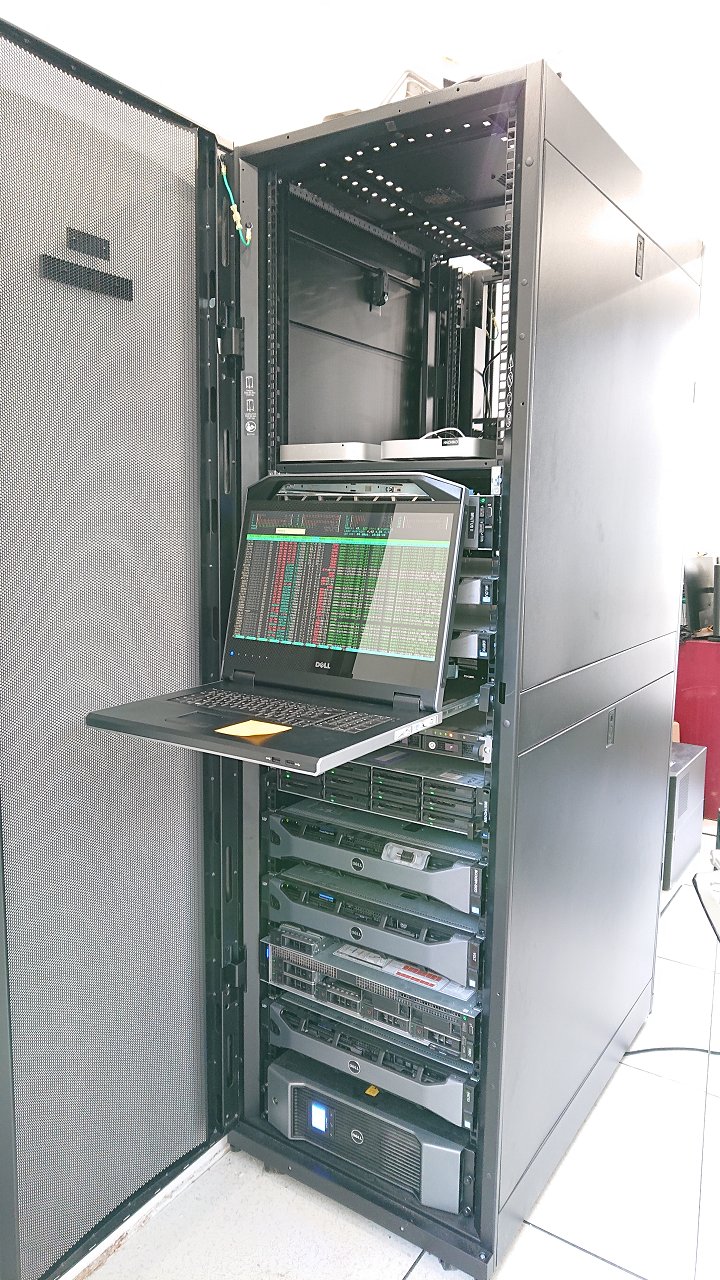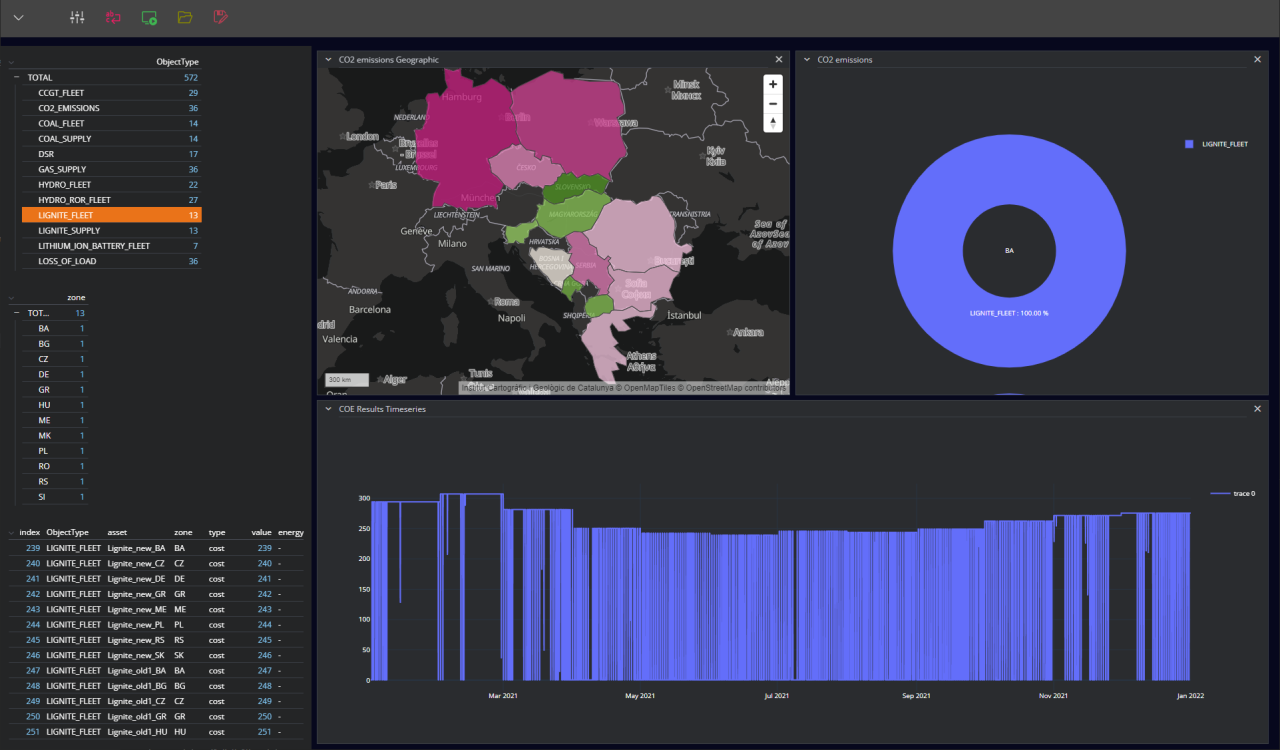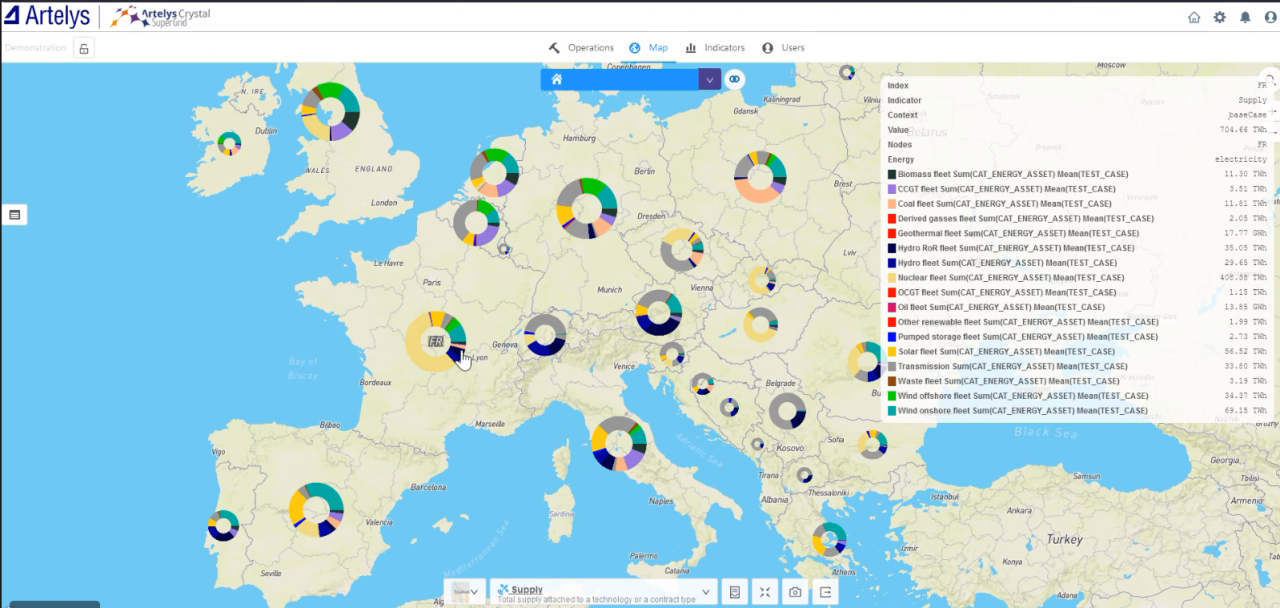Robust Power System Maintenance Planning via Stochastic Optimization and HPC
The power plant maintenance planning has very high economic and environmental stakes for energy producers, transmission system operators and more generally to the renewable energy transition. In the context of increased penetration of renewable energies with the unpredictable intermittent generation, ensuring the availability of controllable generation is a key to stable and safe system operation and minimizing the investments costs. A key to ensuring sufficient availability is to rely on optimized power plant maintenance planning which is a very complex stochastic combinatorial optimization problem.
SECTOR: Energy
TECHNOLOGY USED: HPC, Monte Carlo Simulations
COUNTRY: France
The challenge
Shutting down a power plant or transmission line for maintenance likely means having to rely on more expensive energy sources or external energy providers. Given the potential high volatility of the energy market, scheduling maintenance at an unsuitable time can cost millions of Euros. Thus, finding an optimal maintenance plan is the answer to numerous What if questions: What if renewable generation is not as high as expected? What if rain is scarce and storage is low? What if winter is much colder than average and summer much warmer?
Some factors can only be reliably planned a few days ahead (such as weather forecasts), and some others are just purely random (such as an unplanned outage). Regardless, they all add stress to the power network and can make satisfying demand harder to guarantee. Moreover, as the installed capacities of renewable energy sources grow and electric mobility options are deployed, the overall system becomes more subject to uncertainties. As such it is of prime interest to develop tools to ensure that maintenance plans are prepared for a number of scenarios.
While many clients of Artelys would benefit considerably from such tools for robust power system analyses and optimization, this was beyond the SME capabilities at the outset of the project. The development of such a solution would give Artelys a competitive edge and also enable the company to carry out studies on a new level.
The solution
Artelys teamed up with INRIA’s Aviz group in order to develop solutions to this challenge. Solving the problem first required creating a representative data set for the European power system, including stochastic scenarios of demands, renewable energy generation, etc. Then, it was necessary to simulate and optimise these massive scenarios, and cope with the resulting high-dimensional results. For every candidate maintenance plan (obtained as iterates of an optimisation algorithm or through a greedy approach) various plausible, yet unknown scenarios were generated including climate data and random outages on assets (Monte-Carlo approach). These thousands of generated scenarios were then simulated in parallel. Due to the several-hour duration of every single European-wide simulation and the memory required (up to 20GB per simulation) an HPC cluster with 1,280 cores and 200 GB of memory per node was fully used to perform these computations.
The results of these simulations were then combined to compute Key Performance Indicators (KPIs) for maintenance plans. After computation, these KPIs could be analysed in a developed interactive visualisation tool. During computation, the KPIs were then fed back into an optimisation model which computed the next candidate maintenance plan. This process was repeated until all potential plans in a greedy approach were exhausted or until convergence was achieved in the case of local optimisation. The selection of the best scenarios could be guided by various criteria such as minimisation of costs, CO2 emission, or maximisation of social welfare.
Impacts
The approach developed through this project will help power producers and transmission system operators schedule their maintenance in a manner that is resilient to uncertainties. By finding optimal maintenance timing, they will reduce the risk of having to resort to external market players or minimize this cost, thereby saving millions in revenue, and reducing the risk of potential demand curtailment situations. Furthermore, optimal scheduling of maintenance can prevent the need to resort to more polluting assets to compensate for the limited availability of other power generation assets.
Through the experiment, Artelys has gained the ability to conduct quantitative prospective studies on behalf of their clients for a large number of scenarios that cover these uncertainties. A prototype of the solution has already been used successfully in a commercial project. Moreover, further investments into these capabilities are foreseen. It is expected that the experiment results will contribute directly and indirectly to as many as 4 million Euros in revenue in the upcoming years through performing this new type of prospective study. Without the HPC-based solution, facilitating and improving existing studies was previously impossible as a competitive edge to enhance the current line of business.
The experiment also opens the possibility for Artelys to bundle the HPC-based optimisation with their portfolio of optimisation software available to more advanced customers, allowing them to reach out to more clients. Such computationally expensive combinatorial optimisation gives Artelys a keen edge over its competitors.
This work also has societal impacts as it will help key players to make better use of the power system, which in the end sums up to better usage of renewable energy generation resources and a lower cost of electricity.
Benefits
- Estimated additional sales of up to €4 million over the next 5 years.
- 3 quantitative studies per year which could not be performed without these new HPC-based calculation capabilities.
- Up to 5 studies per year significantly accelerated and improved thanks to these calculation tools.
- Improved calculation capabilities in Artelys software for experienced users.
Organisations involved:
End User: Artelys
HPC Center: Institut national de recherche en sciences et technologies du numérique (INRIA)




